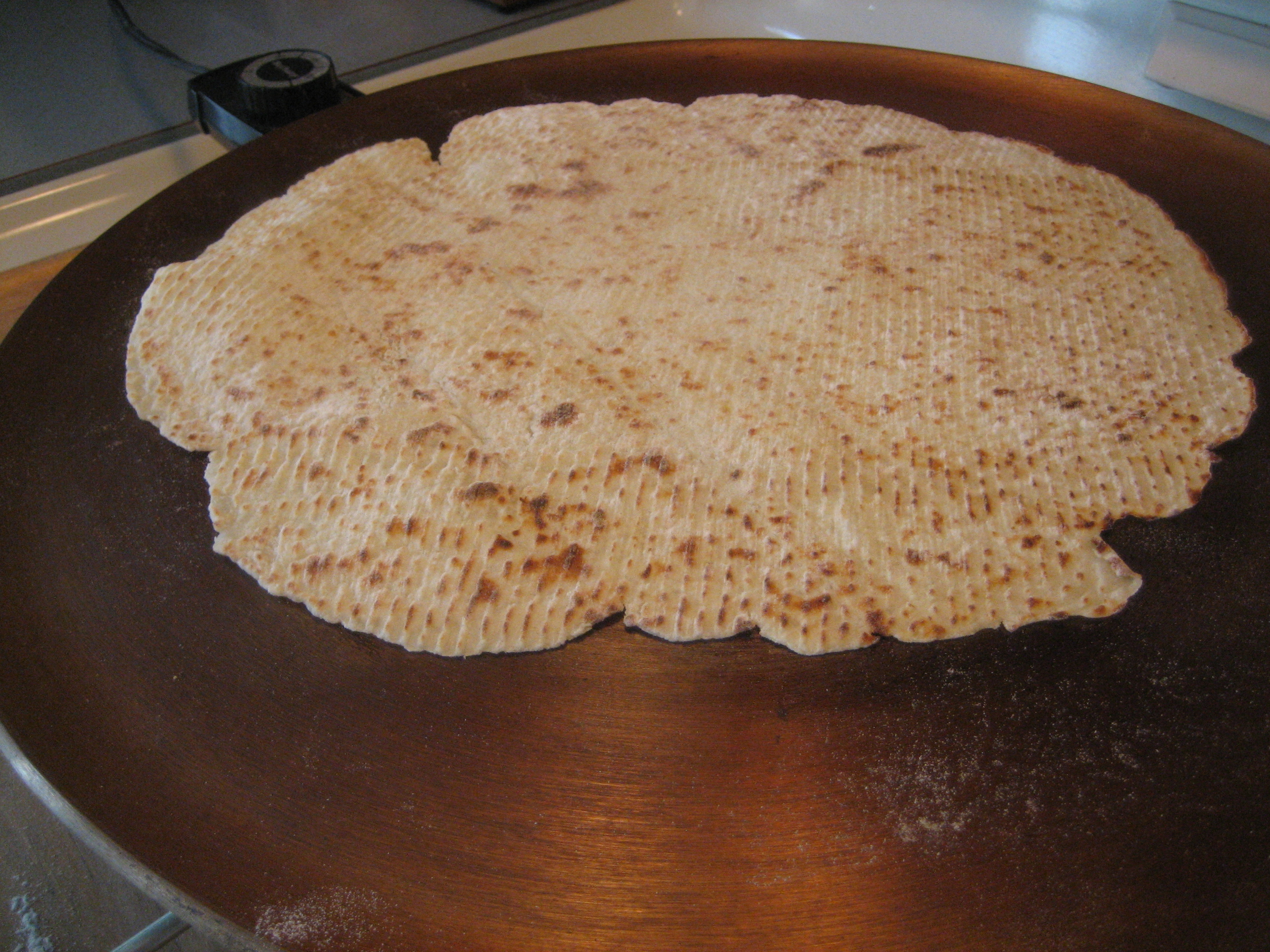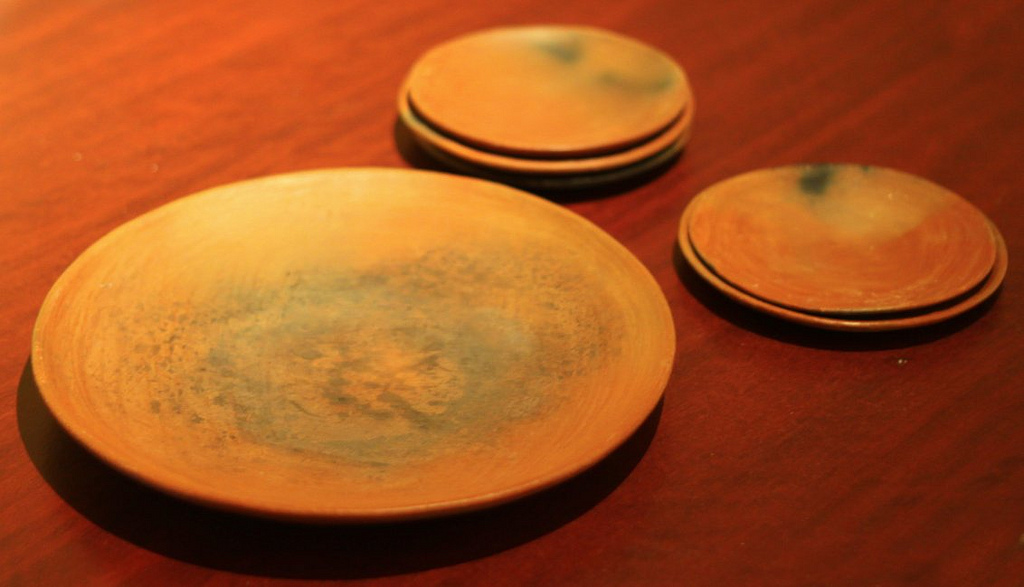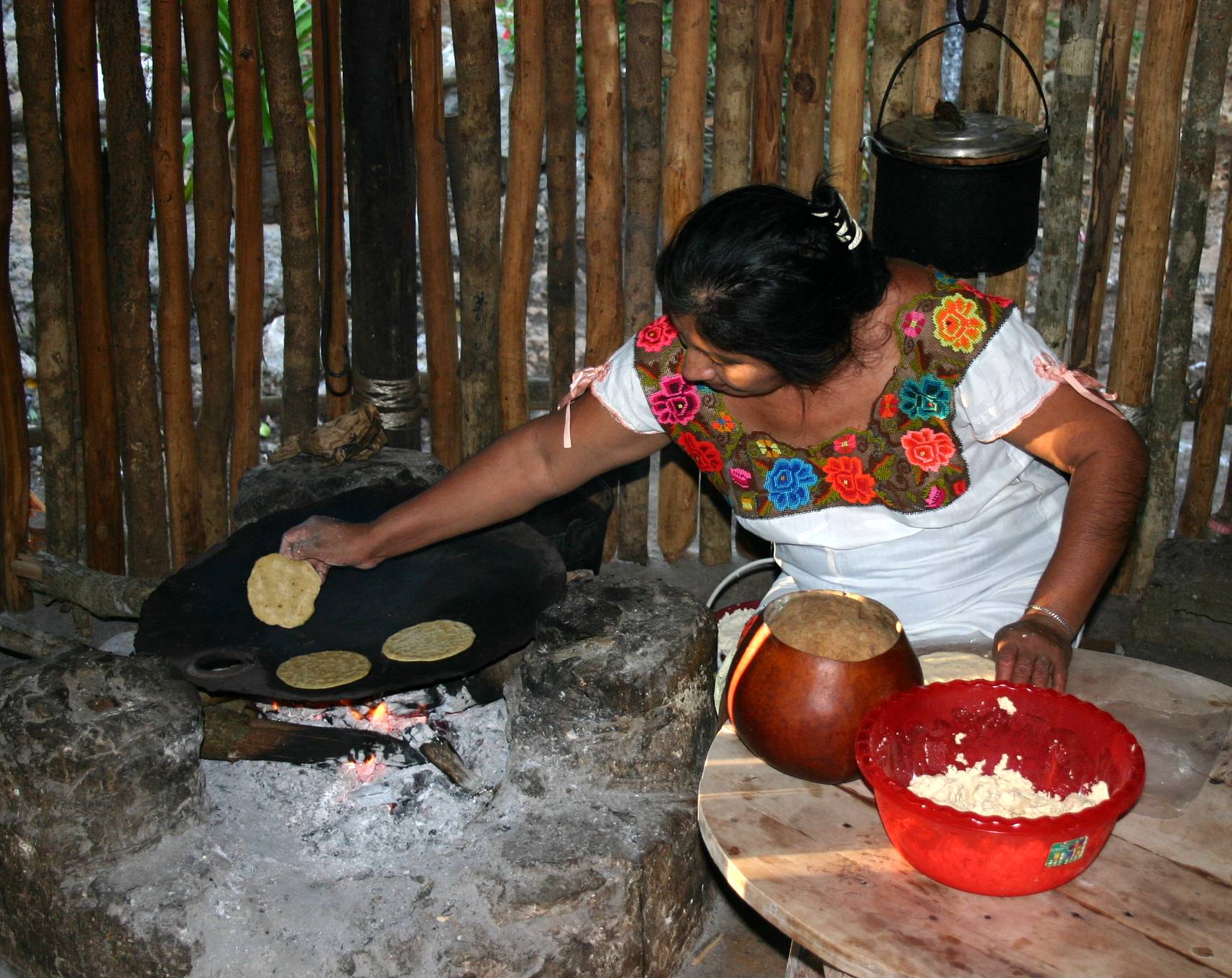|
Griddle
A griddle, in the UK also called a girdle, is a cooking device consisting mainly of a broad, usually flat cooking surface. Nowadays it can be either a movable metal pan- or plate-like utensil, a flat heated cooking surface built onto a stove as a kitchen range, or a compact cooking machine with its own heating system attached to an integrated griddle acting as a cooktop. A traditional griddle can either be a brick slab or tablet, or a flat or curved metal disc, while in industrialized countries, a griddle is most commonly a flat metal plate. A griddle can have both residential and commercial applications and can be heated directly or indirectly. The heating can be supplied either by a flame fuelled by wood, coal or gas; or by electrical elements. Commercial griddles run on electricity, natural gas or propane. [...More Info...] [...Related Items...] OR: [Wikipedia] [Google] [Baidu] |
Lefse
Lefse () is a traditional soft Norwegian flatbread. It is made with riced potatoes, can include flour, all purpose (wheat) flour, and includes butter, and milk, cream, or lard. It is cooked on a large, flat griddle. Special tools are used to prepare lefse, including a potato ricer, long wooden turning sticks and special rolling pins with deep grooves. Flavoring There are many ways of flavoring lefse. The most common is adding butter and sugar to the lefse and rolling it up. In Norway, this is known as . Other options include adding cinnamon, or spreading Jelly (fruit preserves), jelly, lingonberries, or Gomme (food), gomme on it. Scandinavian-United States, American variations include rolling it with a thin layer of peanut butter and sugar, with butter and white sugar, white or brown sugar, with butter and corn syrup, or with butter and salt, or with ham and eggs. Also eaten with beef and other savory items like ribberull and Mustard (condiment), mustard, it is comparable to ... [...More Info...] [...Related Items...] OR: [Wikipedia] [Google] [Baidu] |
Flatbread
A flatbread is bread made usually with flour; water, milk, yogurt, or other liquid; and salt, and then thoroughly rolled into flattened dough. Many flatbreads are Unleavened bread, unleavened, although some are leavened, such as pita bread. A Serving size, serving of 85g (~3 ounces) of pita bread has 234 Calorie, calories. Flatbreads range from below one millimeter to a few centimeters thick so that they can be easily eaten without being sliced. They can be baked in an oven, fried in hot oil, grilled over hot coals, cooked on a hot pan, tava, Comal (cookware), comal, or metal griddle, and eaten fresh or packaged and frozen for later use. History Flatbreads were amongst the earliest food processing, processed foods, and evidence of their production has been found at ancient sites in Mesopotamia, ancient Egypt, and the Indus Valley Civilisation, Indus civilization. The origin of all flatbread baking systems are said to be from the Fertile Crescent in West Asia, where they would su ... [...More Info...] [...Related Items...] OR: [Wikipedia] [Google] [Baidu] |
Comal (cookware)
A comal is a smooth, flat griddle typically used in Mexico, Central America, and parts of South America, to cook tortillas and arepas, toast spices and nuts, sear meat, and generally prepare food. Similar cookware is called a '' budare'' in South America. Some comals are concave and made of ''barro'' (clay). These are still made and used by the indigenous peoples of Mexico and Central America. Comals are similar to the American griddle or the Indian tawa, and are often used and named interchangeably with these. Comals for home use are generally made from heavy cast iron, and sized to fit over either one burner on the stovetop (round) or two burners front to back (elongated oval). In many indigenous and pre-Hispanic cultures, the comal is handed down from grandmother to mother to daughter, the idea being that a comal tempered over many years of use will heat faster and cook cleaner. History The history of such cooking methods dates back to the pre-Columbian era, when powde ... [...More Info...] [...Related Items...] OR: [Wikipedia] [Google] [Baidu] |
Scones
A scone ( or ) is a traditional British and Irish baked good, popular in the United Kingdom and Ireland. It is usually made of either wheat flour or oatmeal, with baking powder as a leavening agent, and baked on sheet pans. A scone is often slightly sweetened and occasionally glazed with egg wash. The scone is a basic component of the cream tea. It differs from teacakes and other types of sweets that are made with yeast. Scones were chosen as Ireland's representative for Café Europe during the Austrian presidency of the European Union in 2006, while the United Kingdom chose shortbread. Lexicology The pronunciation of the word within the English-speaking world varies, with some pronouncing it (rhymes with "gone"), and others (rhymes with "tone"). The dominant pronunciation differs by area. Pronunciation rhyming with "tone" is strongest in the English Midlands and Ireland, though it seems to have less prominent patches in Cornwall and Essex. The pronunciation rhyming ... [...More Info...] [...Related Items...] OR: [Wikipedia] [Google] [Baidu] |
Tapioca
Tapioca (; ) is a starch extracted from the tubers of the cassava plant (''Manihot esculenta,'' also known as manioc), a species native to the North Region, Brazil, North and Northeast Region, Brazil, Northeast regions of Brazil, but which has now spread throughout parts of the world such as West Africa and Southeast Asia. It is a perennial shrub adapted to the hot conditions of tropical lowlands. Cassava copes better with poor soils than many other food plants. Tapioca is a staple food for millions of people in tropical countries. It provides only carbohydrate food value, and is low in protein, vitamins, and Mineral (nutrient), minerals. In other countries, it is used as a thickening agent in various manufactured foods. Etymology ''Tapioca'' is derived from the word ''tipi'óka'', its name in the Tupi–Guarani languages, Tupi language spoken by natives when the Portuguese first arrived in the Northeast Region of Brazil around 1500. This Tupi word is translated as 'sedimen ... [...More Info...] [...Related Items...] OR: [Wikipedia] [Google] [Baidu] |
Electric
Electricity is the set of physical phenomena associated with the presence and motion of matter possessing an electric charge. Electricity is related to magnetism, both being part of the phenomenon of electromagnetism, as described by Maxwell's equations. Common phenomena are related to electricity, including lightning, static electricity, electric heating, electric discharges and many others. The presence of either a positive or negative electric charge produces an electric field. The motion of electric charges is an electric current and produces a magnetic field. In most applications, Coulomb's law determines the force acting on an electric charge. Electric potential is the Work (physics), work done to move an electric charge from one point to another within an electric field, typically measured in volts. Electricity plays a central role in many modern technologies, serving in electric power where electric current is used to energise equipment, and in electronics dealing w ... [...More Info...] [...Related Items...] OR: [Wikipedia] [Google] [Baidu] |
Latin
Latin ( or ) is a classical language belonging to the Italic languages, Italic branch of the Indo-European languages. Latin was originally spoken by the Latins (Italic tribe), Latins in Latium (now known as Lazio), the lower Tiber area around Rome, Italy. Through the expansion of the Roman Republic, it became the dominant language in the Italian Peninsula and subsequently throughout the Roman Empire. It has greatly influenced many languages, Latin influence in English, including English, having contributed List of Latin words with English derivatives, many words to the English lexicon, particularly after the Christianity in Anglo-Saxon England, Christianization of the Anglo-Saxons and the Norman Conquest. Latin Root (linguistics), roots appear frequently in the technical vocabulary used by fields such as theology, List of Latin and Greek words commonly used in systematic names, the sciences, List of medical roots, suffixes and prefixes, medicine, and List of Latin legal terms ... [...More Info...] [...Related Items...] OR: [Wikipedia] [Google] [Baidu] |
Natural Gas
Natural gas (also fossil gas, methane gas, and gas) is a naturally occurring compound of gaseous hydrocarbons, primarily methane (95%), small amounts of higher alkanes, and traces of carbon dioxide and nitrogen, hydrogen sulfide and helium. Methane is a colorless and odorless gas, and, after carbon dioxide, is the second-greatest greenhouse gas that contributes to global climate change. Because natural gas is odorless, a commercial odorizer, such as Methanethiol (mercaptan brand), that smells of hydrogen sulfide (rotten eggs) is added to the gas for the ready detection of gas leaks. Natural gas is a fossil fuel that is formed when layers of organic matter (primarily marine microorganisms) are thermally decomposed under oxygen-free conditions, subjected to intense heat and pressure underground over millions of years. The energy that the decayed organisms originally obtained from the sun via photosynthesis is stored as chemical energy within the molecules of methane and other ... [...More Info...] [...Related Items...] OR: [Wikipedia] [Google] [Baidu] |
Arepa
''Arepa'' () is a type of flatbread made of ground maize dough stuffed with a filling, eaten in northern parts of South America since pre-Columbian times, and notable primarily in the cuisine of Colombia and Venezuela, but also present in Bolivia, Ecuador, and Central America. Arepa is commonly eaten in those countries and can be served with accompaniments, such as cheese, '' cuajada'' (fresh cheese), various types of meat, avocado, or (deviled ham spread). It can also be split to make sandwiches. Sizes, maize types, and added ingredients vary based on preparation. It is similar to the Mexican '' gordita,'' the Salvadoran '' pupusa'', the Ecuadorian , and the Panamanian or . Origins The is a pre-Columbian dish from the area that is now Colombia, Panama and Venezuela. Instruments used to make flour for the , and the clay slabs on which they were cooked, were often found at archaeological sites in the area. Although it has not been specified in which country an ' was cooked ... [...More Info...] [...Related Items...] OR: [Wikipedia] [Google] [Baidu] |
Tortilla
A tortilla (, ) is a thin, circular unleavened flatbread from Mesoamerica originally made from maize hominy meal, and now also from wheat flour. The Aztecs and other Nahuatl speakers called tortillas ''tlaxcalli'' (). First made by the indigenous peoples of Mesoamerica before colonization, tortillas are a cornerstone of Mesoamerican cuisine. Corn tortillas in Mesoamerica are known from as early as 500 BCE. Etymology The word ''tortilla'' is derived from the Spanish word ''torta'', meaning "cake," plus the diminutive -''illa''; as a result, the word means "little cake" in Spanish. Varieties Corn Tortillas made from nixtamalized maize meal (''masa de maíz'') are the oldest variety of tortilla. They originated in Mexico and Central America, and remain popular throughout the Americas. Peoples of the Oaxaca region in Mexico first made tortillas at the end of the Villa Stage (1500 to 500 BCE). Towards the end of the 19th century, the first mechanical utensils for making t ... [...More Info...] [...Related Items...] OR: [Wikipedia] [Google] [Baidu] |
Propane
Propane () is a three-carbon chain alkane with the molecular formula . It is a gas at standard temperature and pressure, but becomes liquid when compressed for transportation and storage. A by-product of natural gas processing and petroleum refining, it is often a constituent of liquefied petroleum gas (LPG), which is commonly used as a fuel in domestic and industrial applications and in low-emissions public transportation; other constituents of LPG may include propene, propylene, butane, butene, butylene, butadiene, and isobutylene. Discovered in 1857 by the French chemist Marcellin Berthelot, it became commercially available in the US by 1911. Propane has lower volumetric energy density than gasoline or coal, but has higher gravimetric energy density than them and burns more cleanly. Propane gas has become a popular choice for barbecues and portable stoves because its low −42 °C boiling point makes it vaporise inside pressurised liquid containers (it exists in two pha ... [...More Info...] [...Related Items...] OR: [Wikipedia] [Google] [Baidu] |
Saj Bread
Saj may refer to: * Saj (bread) * Saj (utensil) * Saj', Arabic literary genre * Saj, Iran, a village in Qazvin Province * Saj, the tree ''Terminalia elliptica'' * Saj (Coronation Street), TV character * Sahu language, ISO 639-3 language code SAJ may refer to: * Scout Association of Japan * Sir Anerood Jugnauth, former President and PM of Mauritius * Society for the Advancement of Judaism, a Reconstructionist synagogue in New York City * Special Anti-Terrorist Unit (Serbia) (Serbian: ) * St Johns railway station St Johns railway station is in the London Borough of Lewisham. It lies down the South Eastern Main Line from , and is situated between and . History Early years (1873–1922) The South Eastern Railway (SER) opened a two-track railway (th ..., London, England, National Rail station code * Finnish Trade Union Federation () ** Finnish Trade Union Federation (1960) {{disambiguation ... [...More Info...] [...Related Items...] OR: [Wikipedia] [Google] [Baidu] |











